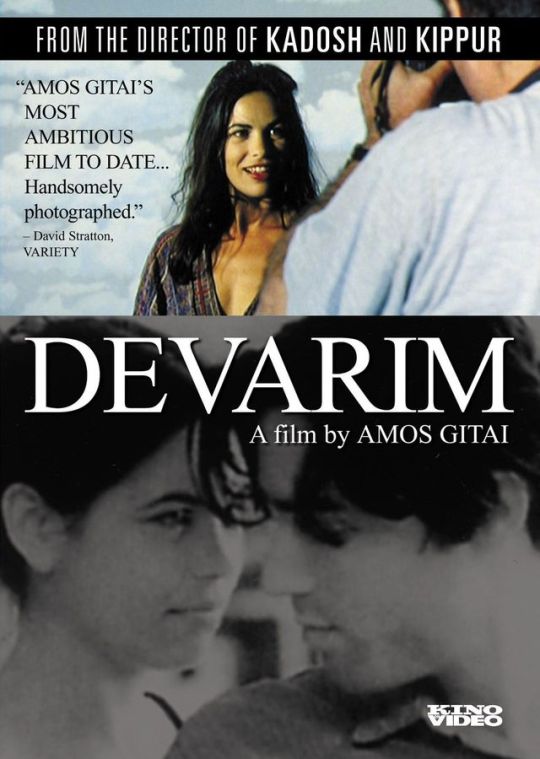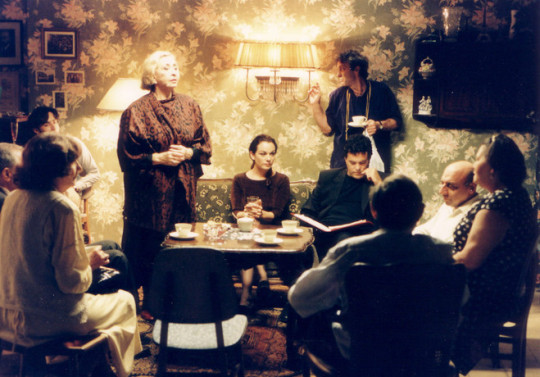#amos gitaï
Photo

#achinoam nini noa#yael abecassis#hanna laslo#a tramway in jerusalem#un tramway a jerusalem#movie poster#liron levo#maisa abd elhadi#pippo delbono#mathieu amalric#movie posters#movies#poster#amos gitai#amos gitaï#film#films#israel#israeli film
4 notes
·
View notes
Text
Festival Filmelier em Campinas
O Festival Filmelier no Cinema exibirá 20 longas inéditos de 19 de abril a 10 maio no Cinépolis Galleria e Kinoplex Dom Pedro.
Realizado pela Sofá Digital, o festival trará produções consagradas com grandes astros do cinema como Omar Sy, Isabelle Huppert e Ethan Hawke, e diretores renomados como Amos Gitaï, Jafar Panahi e Phyllida Lloyd – diretora da franquia Mamma Mia!.
A programação é…

View On WordPress
0 notes
Photo

#11´09"01#samira makhmalbaf#claude lelouch#youssef chahine#danis tanovic#ken loach#alejandro gonzález iñárritu#amos gitaï#mira nair#sean penn#shohei imamura
2 notes
·
View notes
Photo

http://lemiroirdesfantomes.blogspot.com/2022/04/lassassinat-de-trotsky.html
1 note
·
View note
Photo

A l’ouest du Jourdain, Amos Gitaï, 2017
1 note
·
View note
Photo
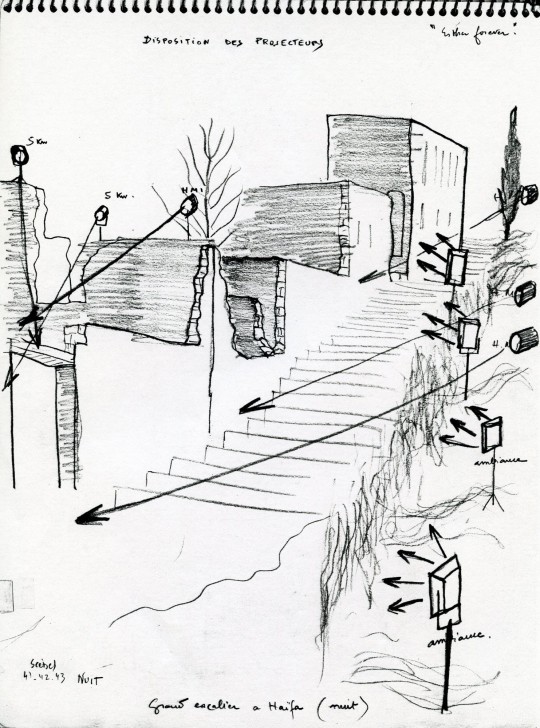
Henri Alekan’s sketch projectors for Amos Gitaï’s Esther, 1985
20 notes
·
View notes
Text
Yesterday night, I took one doxylamine and I slept well. Today, I cried in the bathroom, tried to read a book, but I could not concentrate myself so i watched Kadosh by Amos Gitaï. By the way, I started to watch the tv show Euphoria.
3 notes
·
View notes
Photo
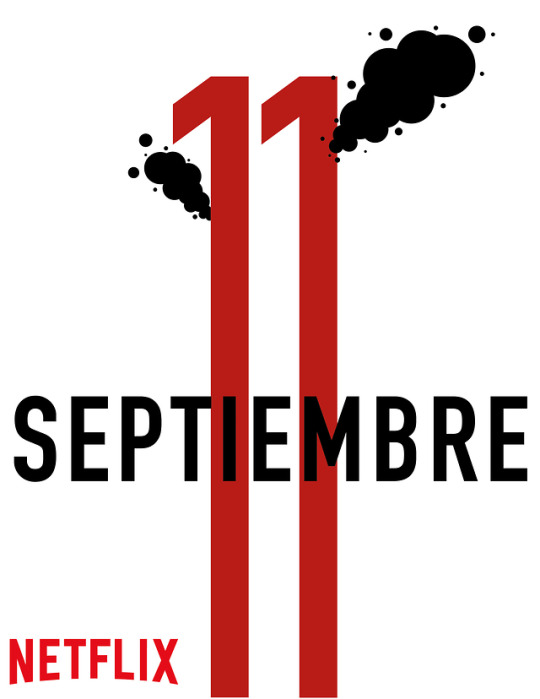

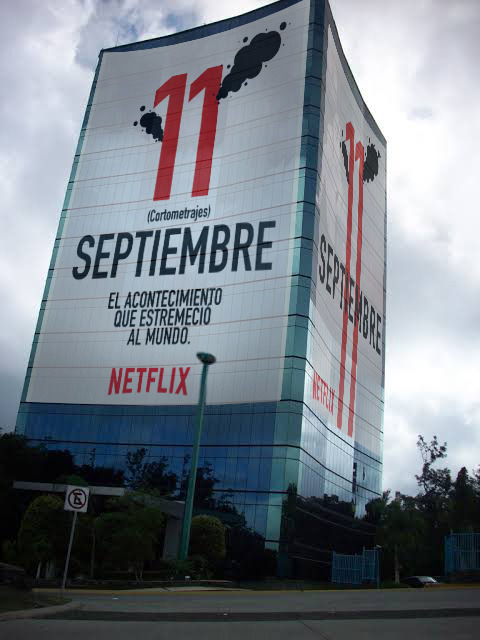
Diseño Vinilo del Documental 11 de Septiembre.
Sinopsis
11'09''01 - September 11 película colectiva con 11 historias de 11 minutos de 11 directores diferentes Samira Makhmalbaf, Claude Lelouch, Youssef Chahine, Danis Tanovic, Idrisa Uedraogo, Ken Loach, Alejandro González Iñárritu, Amos Gitaï, Mira Nair, Sean Penn, Shohei Imamura estrenada en el año 2002.
SOPORTE
¿Cómo?: El soporte seria en un vinilo de 62 metros de alto por 25 de ancho.
¿Por qué?: Se cubriría la fachada principal de la Torre Ánimas, que es uno de los edificios más altos de Xalapa, y se encuentra en una zona transitada de la ciudad.
¿Para qué?: Se propone un cartel que cubra casi enteramente la fachada del edificio. Se decidió usar este soporte, por la relación ideológica que tiene con en tema del documental, que es una serie de cortos sobre la caída de las Torres Gemelas. Así que qué mejor lugar que la torre Animas para hacer conciencia y dar a conocer más la importancia de este tema.
TIPOGRAFÍA
¿Cómo?: Se usó la tipografía “DIN Condenced”, que es una tipografía sans serif en bold, en tono oscuridad y en un matíz de Rojo.
¿Por qué?: Se propuso esta tipografía, porque al ser condensada crea una similitud visual a las torres gemelas, se usó en bold y diferentes puntajes entre las palabras para que el espectador capte la jerarquía de lo que se quiere decir. Dándole más peso visual al 11 y a Septiembre. 11 se encuentra en un matiz de rojo que nos da un sinónimo de violencia y sangre, septiembre, cortometrajes y el subtítulo se encuentran en oscuridad para crear un alto contraste con el fondo.
¿Para qué?: El 11 se encuentra centrado, simbolizando a las torres gemelas. Cortometrajes se encuentra debajo del 11 dando la indicación de que son 11 documentales, pero se encuentra en un puntaje menor ya que septiembre está centrado debajo de 11 y cortometrajes en un puntaje alto para que 11 y Septiembre se puedan leer juntos a simple vista. El subtítulo “El acontecimiento que estremeció al mundo” se encuentra en un puntaje menor a Septiembre pero mayor a cortometrajes debajo de Septiembre.
FORMAS Y FIGURAS
¿Cómo?: Las formas usadas fueron en un nivel representacional de humo en tono oscuridad. El logo del cliente se encuentra centrado al inferior de la composición.
¿Por qué?: Se imitó la forma del humo que se creó en las explosiones del 11 de Septiembre usando solo círculos para crear una síntesis visual dentro de la composición usando solo formas simples. Se hicieron en tono oscuridad para mantener la paleta de tonos simple dentro de la composición. Se coloca en la parte inferior el logo del cliente, para que cuando se termine de leer el contenido de arriba a abajo, se sepa de la compañía que se está encargando de dar a conocer el documental.
¿Para qué?: Se hizo esta síntesis visual para mantener una armonía dentro de la ilustración y no crear tanto peso visual innecesario.
FONDOS
¿Cómo?: El fondo se encuentra en luz en toda la composición.
¿Por qué?: Esto representa la esperanza, de un futuro con conciencia sobre el pasado de este trágico incidente.
ENVOLVENTE
No se cuenta con un envolvente porque no se consideró necesario
#11 de septiembre#9/11 tribute#documental#cortometrajes#proyectos de comunicación visual#proyectos de comunicación#comunicación#diseño gráfico#diseño
3 notes
·
View notes
Photo
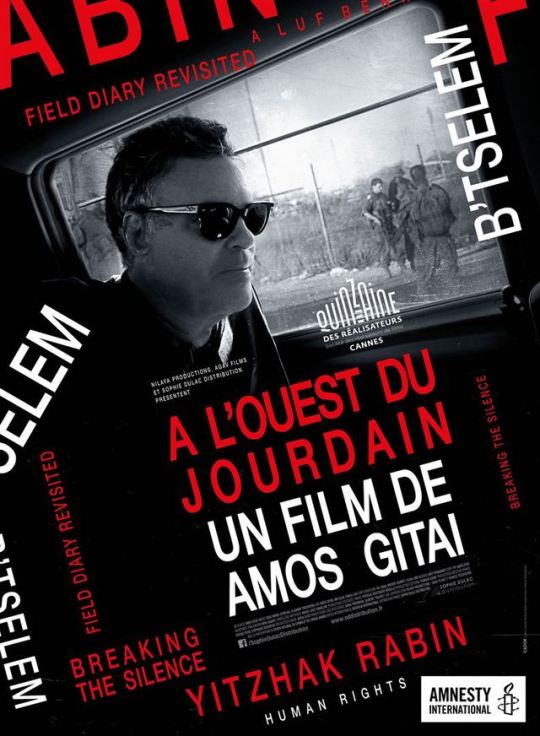
A L’OUEST DU JOURDAIN - Amos Gitaï retourne dans les territoires occupés pour la première fois depuis son film documentaire JOURNAL DE CAMPAGNE (1982). Gitaï circule en Cisjordanie, où il est témoin des efforts des citoyens israéliens et palestiniens pour tenter de dépasser les conséquences d’une occupation qui dure depuis cinquante ans.
Un film clairement subjectif et ouvertement engagé, où l'on entend, au milieu de ce chœur d'anonymes, la voix spectrale d'Yitzhak Rabin, la colère glaçante de la ministre israélienne des Affaires étrangères, qui bannit le mot "occupation", le cri d'alarme de l'éditorialiste de Haaretz, pour qui, si rien ne change, le pays est condamné au "suicide".
Un documentaire très librement construit mais surtout très centré sur son réalisateur. Une série d’interviews plus ou moins captivants, parmi lesquels on relèvera surtout celui d’Amos jeune, avec le héros national mort pour la paix: Itzhak Rabbin. A ne montrer que cela Gitai avait déjà fait sa pub. Et pourtant, il lui en faut d’avantage, et notamment donner l’image de l’israélien parfait, pacifiste et à l’écoute de tous les sons de cloche, cinéaste par idéal politique et à grande vocation pédagogique.
Ça en fait un peu beaucoup pour un seul homme qui n’innovant pas grand chose dans ce nouvel opus, apparait surtout comme un opportuniste qui a grand besoin de faire voir sa tronche à l’écran.
NOTE 10/20 - Je déteste Amos GITAI au moins autant que j’adore ses idées: sa critique de la politique actuelle en Israël et ses envies de paix.
Quand à ce documentaire, il reste moyennement intéressant, assez répétitif relativement aux autres films du même réalisateur, un peu profiteur donc et surtout bien narcissique.
3 notes
·
View notes
Video
youtube
En hommage à Albert Camus, qui a écrit "Lettres à un ami allemand" en pleine guerre, pour tenter de renouer un dialogue entre Allemands et Français, Amos Gitaï propose sa "Lettre à un ami à Gaza". Des lectures poignantes de poèmes en hébreu et en arabe se mêlent à des projections et des déambulations musicales. Hommage à Camus donc, mais aussi hommage aux arts. Une pièce qui interroge sur la puissance de la mémoire, le rôle de l’artiste dans la transmission ou encore sur le pouvoir de la littérature. En seconde partie, Amos Gitaï est rejoint par l’écrivain Santiago Amigorena, qui signe "Le Ghetto intérieur". Il y retrace la vie de son grand-père, qui s’est exilé en Argentine en 1929 et qui a laissé à Varsovie les siens… Ce récit qui apparaît comme un véritable combat contre le silence. L'Invité des Matins de Guillaume Erner - émission du 29 août 2019 À retrouver ici : https://www.franceculture.fr/emissions/linvite-des-matins/saison-26-08-2019-29-06-2020 Abonnez-vous pour retrouver toutes nos vidéos : https://www.youtube.com/channel/UCd5DKToXYTKAQ6khzewww2g/?sub_confirmation=1 Et retrouvez-nous sur... Facebook : https://fr-fr.facebook.com/franceculture Twitter : https://twitter.com/franceculture Instagram : https://www.instagram.com/franceculture
0 notes
Text
Documento - “Bem-vindo à São Paulo” (2004)
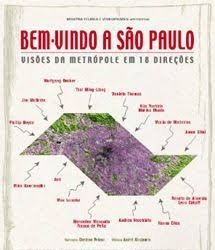
Título: Bem-vindo à São Paulo - Visões da Metrópole em 18 Direções
Tipo de filme: Longa-metragem
Ano de produção: 2004
Idiomas: Inglês, japonês, português
Direção: Leon Cakoff, Wolfgang Becker III, Maria de Medeiros, Amos Gitaï, Mika Kaurismäki, Jim McBride, Phillip Noyce e Tsai Ming-liang
Estreia: 21 de setembro de 2007
Duração: 96 minutos
Gênero: Documentário
Elenco: Caetano Veloso (Narrador)
Sinopse: São Paulo é a maior cidade do hemisfério sul, com uma dinâmica incessante de misturas culturais, com imigrantes de todo o mundo e migrantes de todas as partes do Brasil.
A Mostra Internacional de Cinema em São Paulo convidou vários cineastas internacionais para iniciar o projeto de um longa-metragem com distintas visões sobre a cidade, relevando a importância do olhar estrangeiro com foco nas peculiaridades da nossa metrópole, a terceira maior cidade do mundo. O resultado é o longa-metragem Bem-Vindo a São Paulo / Welcome to São Paulo, que levou três anos sendo produzido e ficou pronto para ser lançado nos cinemas em 2007.
Todo o longa-metragem é narrado por Caetano Veloso, que também participa em dois segmentos do filme com a sua emblemática canção sobre São Paulo, "Sampa".
0 notes
Link
0 notes
Link
0 notes
Text
Le Dernier Jour d’Yitzhak Rabin
Date de sortie :16 décembre 2015
Genre :Drame, Thriller
Nationalité :Israélien, Français
Avec :Ischac Hiskiya, Pini Mitelman, Tomer Sisley
Réalisateur :Amos Gitaï
4 novembre 1995. Yitzhak rabin, premier ministre israélaisse, l’brave des accords d’oslo et commission nobel de la pacification, est infanticideé sur la emplacement des rois d’israël à tel aviv croupe un nonchalant oraison contre la précipitation et pendant la réduction. Son exécution : un étudiant sémitique croyants d’insupportable droite. Vingt ans arrière, le courtier amos gitaï revient sur cet événement choquant contre-poil un nouvel éclairage. Replaçant l’homicide dans lequel son ambiance ruse et socipompe, le extrême soleil d’yitzhak rabin mêle reconstitutions fictives et images d’archives contre d’offrir un exact thriller politique.
from Film en Streaming VF http://filmistreaming.org/le-dernier-jour-dyitzhak-rabin/
0 notes
Text
Hyperallergic: From a 16th-Century Book to a Robot-Assisted Performance, Artists Explore the Legend of the Golem
Miloslav Dvořak, “Le Golem et Rabbi Loew près de Prague” (1951), oil on canvas, 244 x 202 cm (Prague, Židovske Muzeum © Jaroslav Horejc) (all images courtesy of musée d’art et d’histoire du Judaïsme, Paris, unless noted)
Noise-math philosopher Norbert Wiener once aptly compared the old Jewish myth about the golem with cybernetic technology. Viewed through that lens, everything from transhuman artificial life cyborgs to anthropomorphic robots to humanoid androids to posthuman digital avatars bear the mystical mark of an artificial body madly turning on its creator. This oily tale is the oldest narrative about artificial life and is now subject of the exhibition Golem! Avatars d’une légende d’argile at Musée d’art et d’histoire du Judaïsme.
The golem was first mentioned in passing as גֹּלֶם in the Bible in Psalm 139:16, but the first golem story was spun by the 16th-century Talmudic scholar Rabbi Loew ben Bezalel. In it, he supposedly used Kabbalistic magic, Hebrew letters, paranormal amulets, or mystical incantations to conjure into existence the Golem of Prague: a colossal figure built from mud or other base materials, who protected the Bohemian Jews of the country from the Holy Roman Emperor Rudolf II. Though initially a savior, the Golem of Prague eventually became harmful to those he had saved and had to be destroyed. There are myriad subsequent versions of the story, with many variations and contradictions. It is generally agreed that what animated this mystical entity was an inscription either applied to its forehead or slipped under its tongue, and the golem has largely been understood to be an artificial man that is part protector and part monster, but many other differences abound. This specious aspect makes the golem particularly interesting to artists because such contradictory vagueness yields opaque and elusive visual iconography.
Paul Wegener, “Le Golem, comme il vint au monde” (1920) (Deutsche Kinemathek, Berlin © succession Paul Wegener)
The legend spread in the late 19th century, popularized by the 1915 novel The Golem by Gustav Meyrink and three movies by Paul Wegener: The Golem (aka The Monster of Fate) (1915), The Golem and the Dancing Girl (1917), and The Golem: How He Came into the World (1920). An essential general reference for the golem-phile is Idel Moshe’s 1990 book Golem: Jewish Magical and Mystical Traditions on the Artificial Anthropoid, published as part of the Judaica: Hermeneutics, Mysticism, and Religion series by the State University of New York Press in Albany. In it, Moshe maintains that the role of the golem concept in Judaism was to confer an exceptional status to the Jewish elite by bestowing them with the capability of supernatural powers deriving from a profound knowledge of the Hebrew language and its magical and mystical values.
I first encountered this titillating thesis mixing creation and destruction at Emily Bilski’s 1988 show Golem! Danger, Deliverance and Art, which she curated for The Jewish Museum in New York City. I still remember seeing Louise Fishman’s fine painting “Golem” (1981) there, and I was disappointed that the plucky street performance artist Kim Jones (aka Mudman) wasn’t included.
Joachim Seinfeld, “Golem” (1999), series of 5 photographs, 39.5 × 40 cm (Prague, Židovske Muzeum © Adagp, Paris)
Lionel Sabatte, “Smile in Dust #1” (2017), dust and wire, 13 x 14 x 11 cm (image courtesy of the artist)
Steve Niles and Dave Wachter, Breath of Bones: A Tale of the Golem (2013) (© Dark Horse Comics)
This show in Paris follows on the heels of the Golem exhibit at The Jewish Museum Berlin. Both venues had the idea for an exhibition on the golem at the same time, and the institutions cooperated on loans and exchanged ideas. The Musée d’art et d’histoire du Judaïsme show has 136 works, including paintings, drawings, photographs, cinematic clips, literature, comics, and video games by the likes of Charles Simonds, Boris Aronson, Christian Boltanski, Joachim Seinfeld, Gérard Garouste, Amos Gitaï, R.B. Kitaj, and Eduardo Kac. Animated films included are Jan Svankmajer’s masterful Darkness Light Darkness (1989), Jakob Gautel’s First Material (1999), and David Musgrave’s Studio Golem (2012). But the best dramaturgical presentation is the humanoid robotic metaphor of an awakening of posthumanity in School of Moon (2016), a dance choreographed by Eric Minh Cuong Castaing for the Ballet National of Marseille in conjunction with digital artist Thomas Peyruse and roboticist Sophie Sakka. Their impish portrayal blurs our perception of the human and the nonhuman by mixing ballet dancers with children and anthropoid robots.
Christian Boltanski, “Le Golem” (1988), mixed media, 19 × 11.5 × 27 cm (New York, The Jewish Museum © Adagp, Paris)
Gerard Garouste, “Le Golem” (2011), oil on canvas, 270 × 320 cm (collection de l’artiste © Adagp, Paris)
School of Moon (2016), performance (photo courtesy of the artist)
The show kicks off with a large straightforward illustrative painting by Miloslav Dvořak, “Le Golem et Rabbi Loew près de Prague” (1951) but soon turns weirder with a 1964 Dennis Hopper photograph of the great beatnik Wallace Berman. Berman is known for his underground film Aleph (1956–66), in which he uses Hebrew letters to frame a hypnotic, rapid-fire noise montage into a bit of wonder. Moving on, I was fascinated by an odd printed book page from the Sefer Yetzirah (Book of Creation) (1562), in which Kabbalists, wishing to bring a golem to life, looked for the aid of alphabetic formulae. Other powerful pieces include Lionel Sabatte’s redolent sculpture “Smile in Dust” (2017), Philip Guston’s cartoonish painting of a cuddly Ku Klux Klanner “In Bed” (1971), Anselm Kiefer’s crusty stout block “Rabi Low: Der Golem” (1988–2012), Antony Gormley’s rusty condensed sculpture “Clench” (2013), and Niki de Saint Phalle’s swashbuckling “Maquette pour Le Golem” (1972), her model for the architecturally scaled triple-tongued monster slide “Le Golem” (1972), which she built in Jerusalem, that represents the three monotheistic religions plummeting from a golem-monster’s merry mouth.
Sefer Yetsirah, Mantoue: Livre de la creation (1562), printed book page (detail), 21 × 16 cm (Paris, bibliothèque de l’Alliance israélite universelle)
Philip Guston, “In Bed” (1971), oil on canvas, 128 × 292 cm (Centre Pompidou, Musée national d’art moderne / Centre de création industrielle, dépôt de la Centre Pompidou Foundation; photo by the author for Hyperallergic)
Niki de Saint Phalle, “Maquette pour Le Golem” (1972), plâtre, 64 × 114 × 118 cm (Jerusalem, Israel Museum © 2017 Niki Charitable Art Foundation / Adagp, Paris)
Anselm Kiefer, “Rabi Low: Der Golem” (1988–2012), plastique, bois, plomb, verre, résine synthétique, acier, et charbon de bois, 95 × 95 × 58 cm (Anselm Kiefer, courtesy galerie Thaddaeus Ropac, Paris-Salzbourg)
One of the more delightful displays was the room full of Ignati Nivinski’s 1924 watercolors made for the costumes of the 1925 theatre piece The Golem, on loan from the Russian National Archives of Literature and Art. The play was based on the 1921 text The Golem: A Dramatic Poem in Eight Scenes by H. Leivick, a Yiddish poet and political radical who served jail time in Siberia. On the other hand, I was startled and disturbed to see Walter Jacobi’s distasteful 1942 book Golem, a flagrant anti-Semitic propaganda text concerning a Judeo-Masonic conspiracy theory within the Czech Jewry, issued during the Nazi occupation of Czechoslovakia. Seeing it made me think that a Trump-era cyber-golem would busy himself with public relations, propaganda, market research, publicity, disinformation, counter-facts, censorship, espionage, and even cryptography (which in the 16th century was considered a branch of magic).
Ignati Nivinski, “Esquisse pour les costumes de la pièce Le Golem de H. Leivick” (1925), crayon, aquarelle, tempera sur papier, 23 × 15 cm (Moscou, Archives nationales russes de littérature et d’art)
Walter Jacobi, Golem (1942), photo by the author
The show winds down wonderfully with Walter Schulze-Mittendorff’s sculpture “Robot from Fritz Lang’s film Metropolis” (1926), which was recreated by the Louvre in 1994, standing in front of Stelarc’s “Handwriting: Writing One Word Simultaneously with Three Hands” (1982). The combination of these works suggests that golems have to do with an abiding conviction that cold and inert matter may be brought to life through the correct application of words. But rather than a sign of human accomplishment, the golem casts a sour shadow onto our gleaming technological age. The power of human language to summon golems to artificial life is experienced as hubris in this exhibit. This vanity enhances the sexy love-hate of spooky computer-robotics we feel at the root of Alex Garland’s 2015 film Ex Machina, a poster for which is on display. We cannot and do not escape the triumphal attraction of the golem here, as we are confronted (again) with the fetid fact that a determinative force in human life is the virtual merging with the actual. As such, the golem is the minotaur at the heart of our viractual labyrinth.
Stelarc, “Handwriting: Writing One Word Simultaneously with Three Hands at Maki Gallery, Tokyo” (1982) (photographed by Keisuke Oki; re-photographed by the author)
Golem! Avatars d’une légende d’argile, installation view
This brave new word-world was suggested back in 1965 by Kabbalah philosopher Gershom Scholem, when he officially named one of the first Israeli computers Golem I. Because just as the golem is brought to life by combinations of letters, the computer (which is behind any artificially intelligent robot) only obeys coding language. And that coded situation slots us back into Norbert Wiener’s excited trepidation toward machine learning. While learning is a property almost exclusively ascribed to self-conscious living systems, AI computers now exist that can learn from past experiences and so improve their operative functions to the point of surpassing human capabilities. This posthuman transcendence raises concerns both aesthetic and ethical, casting around the art in this show an apologetic air heavy with ambivalence toward human cunning and trickery and seductive art and technology.
Golem! Avatars d’une légende d’argile continues at Musée d’art et d’histoire du Judaïsme (Hôtel de Saint-Aignan, 71, rue du Temple, 3rd arrondissement) through July 16.
The post From a 16th-Century Book to a Robot-Assisted Performance, Artists Explore the Legend of the Golem appeared first on Hyperallergic.
from Hyperallergic http://ift.tt/2qBC9fA
via IFTTT
0 notes


